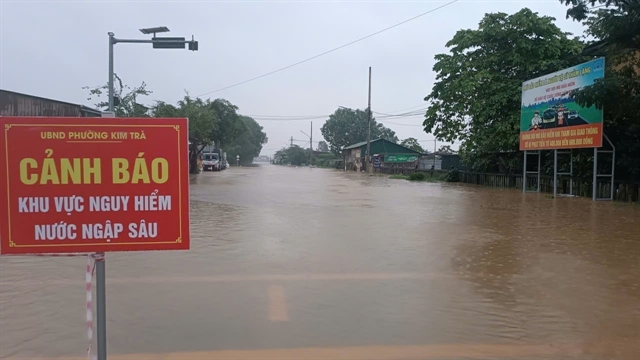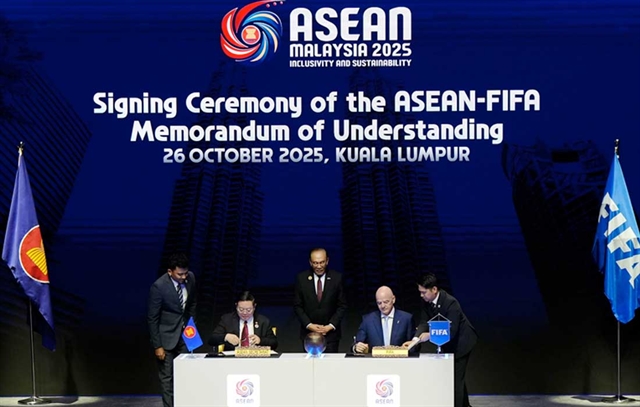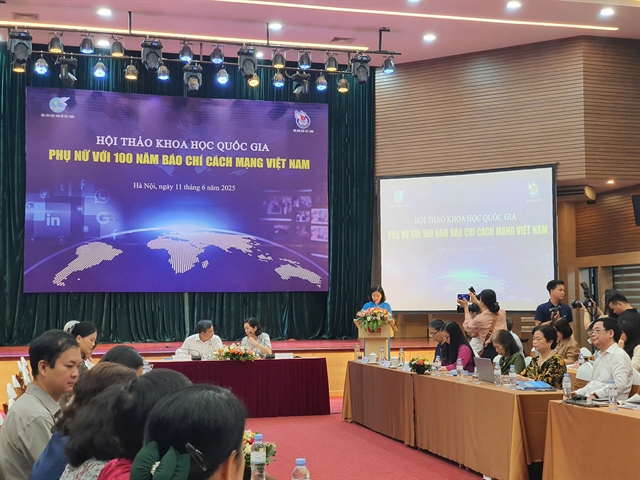 Society
Society

 |
| Some of the first women-focused newspapers in Việt Nam, leading the way for women's empowerment.— VNS Collage |
HÀ NỘI — Women have been key witnesses and active participants in revolutionary press and sustainable development, whether on the front lines or during peacetime.
The was the message from Nguyễn Thị Tuyến, chairwoman of the Việt Nam Women’s Union, as she addressed the national scientific conference 'Women and 100 years of Việt Nam’s Revolutionary Press' on Wednesday.
The event, co-hosted by the union and the Việt Nam Journalists’ Association, was held on the occasion of the 100th anniversary of the national revolutionary press (June 21, 1925-2025).
More than 200 delegates, including experts, journalists, lecturers and students in journalism, communications and women’s studies, attended the conference.
 |
| The national scientific conference “Women and 100 years of Việt Nam’s Revolutionary Press” is held on the occasion of the 100th anniversary of Việt Nam's Revolutionary Press (June 21, 1925-2025). —VNS Photo |
Women-focused journalism in Việt Nam has emerged in the early 20th century, with prominent publications including Nữ giới chung (1919) by the first Vietnamese female editor Sương Nguyệt Anh, as well as Tiếng gọi phụ nữ (1945), Phụ nữ Việt Nam (1948), Phụ nữ Thành phố Hồ Chí Minh (1975) and Phụ nữ Thủ đô (1986).
Women journalists not only contribute to the country’s press landscape but also drive forward national revolutions, including the women’s revolution, said Tuyến.
“For over a century, generations of women journalists and women-focused newspapers have not only fulfilled the noble mission of revolutionary journalism, but have also served as a vital force in protecting women’s legitimate rights and interests, promoting gender equality, and inspiring society with stories of women’s empowerment,” she added.
Presenting her essay at the conference, Trần Thị Kim Hoa, an advisory council member of the Việt Nam Press Museum, noted that male journalists have also played both positive and negative roles in shaping the perceptions of women throughout the history of Việt Nam’s press.
Many of them wrote about the importance of women’s education and liberation. In a series of articles published in Phụ nữ Tân văn, Phan Khôi advocated for women’s right to education and freedom in marriage.
Meanwhile, progressive reports on gender-based violence, reproductive rights, and discrimination against single mothers in today’s newspapers, some authored by male writers, have suggested a more supportive approach to women’s issues, Hoa noted.
However, experts agree that much more needs to be done to advance gender equality today, particularly in the field of journalism.
Statistics showed that women make up over 40 per cent of the Việt Nam Journalists Association’s membership, yet the organisation has never had a female leader at the top level (vice president or higher).
The number of female editors-in-chief also remains disproportionate to the number of women journalists.
Journalism has served both as a mirror reflecting gender ideologies and as a tool that helps shape them, Hoa said.
To continue its role in the public discourse, women-focused journalism must proactively expand its scope of representation to include aspirational role models as well as minority groups, while also strengthening critical perspectives and adapting to science-technology advancements, experts at the event said. — VNS




